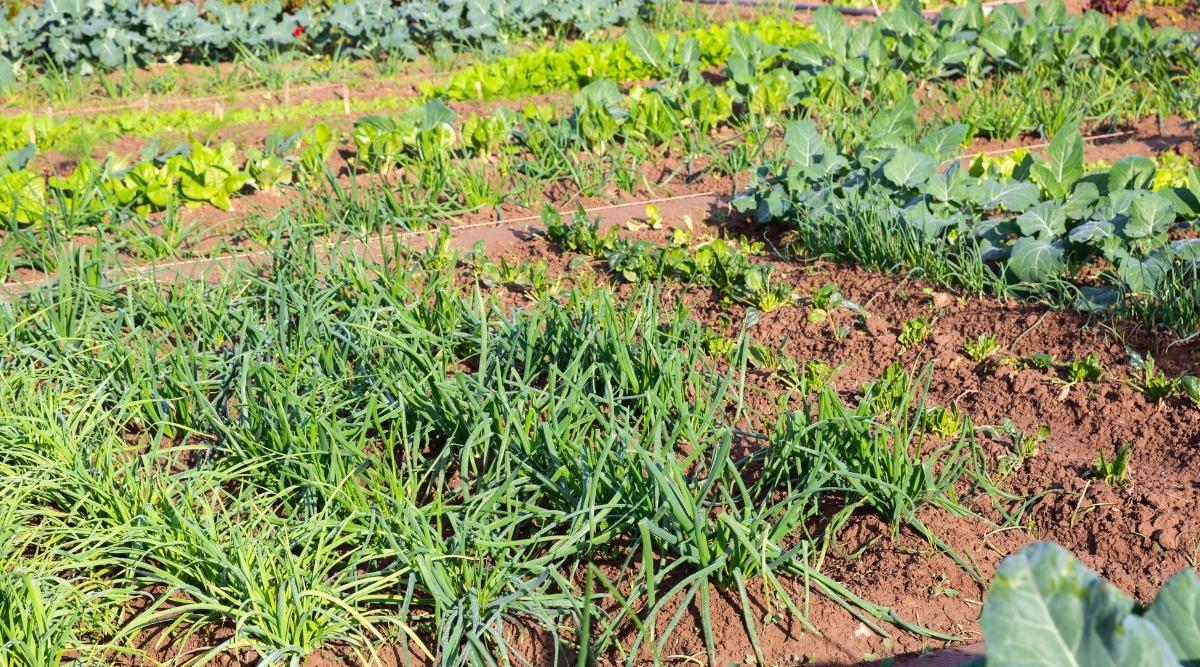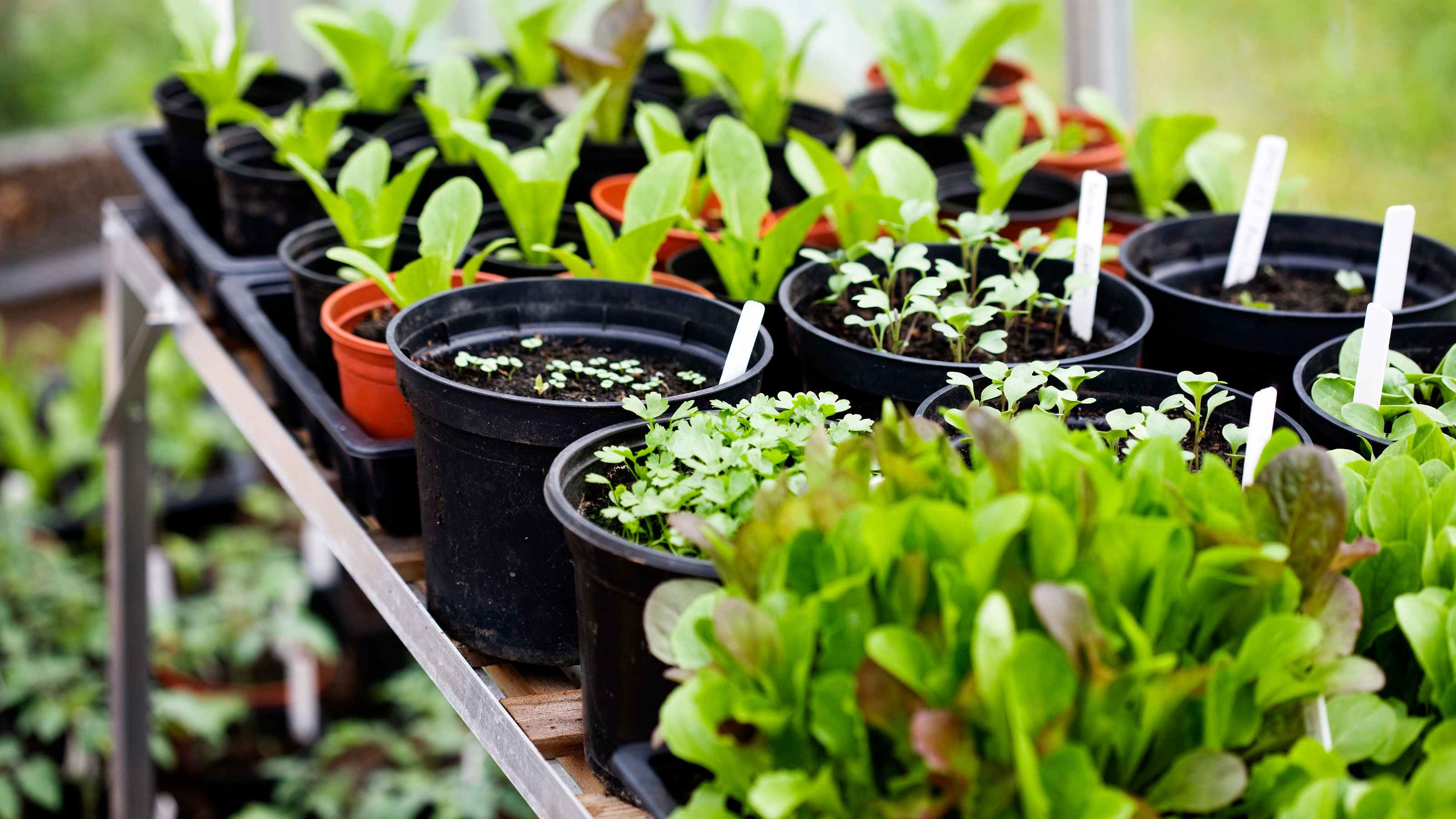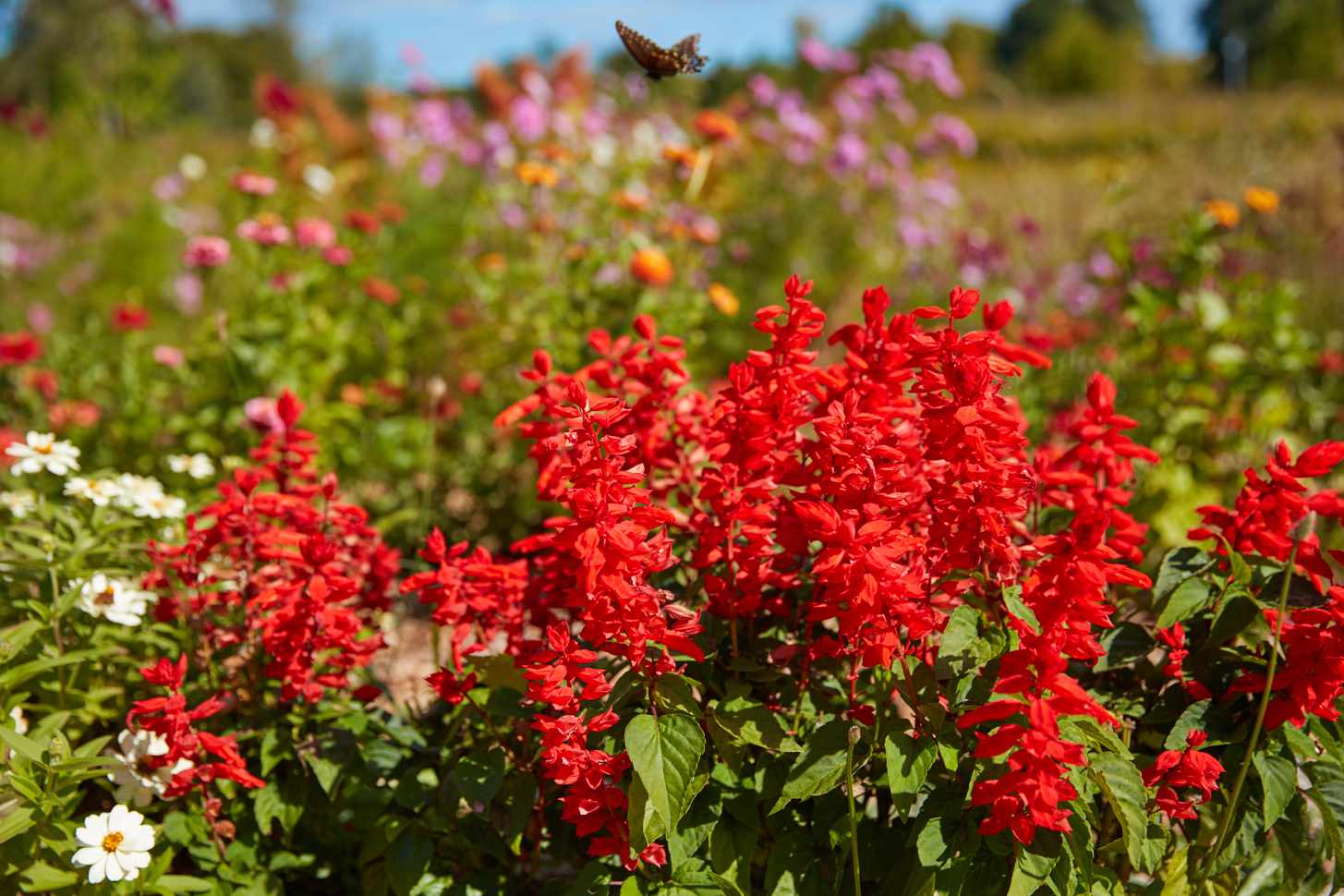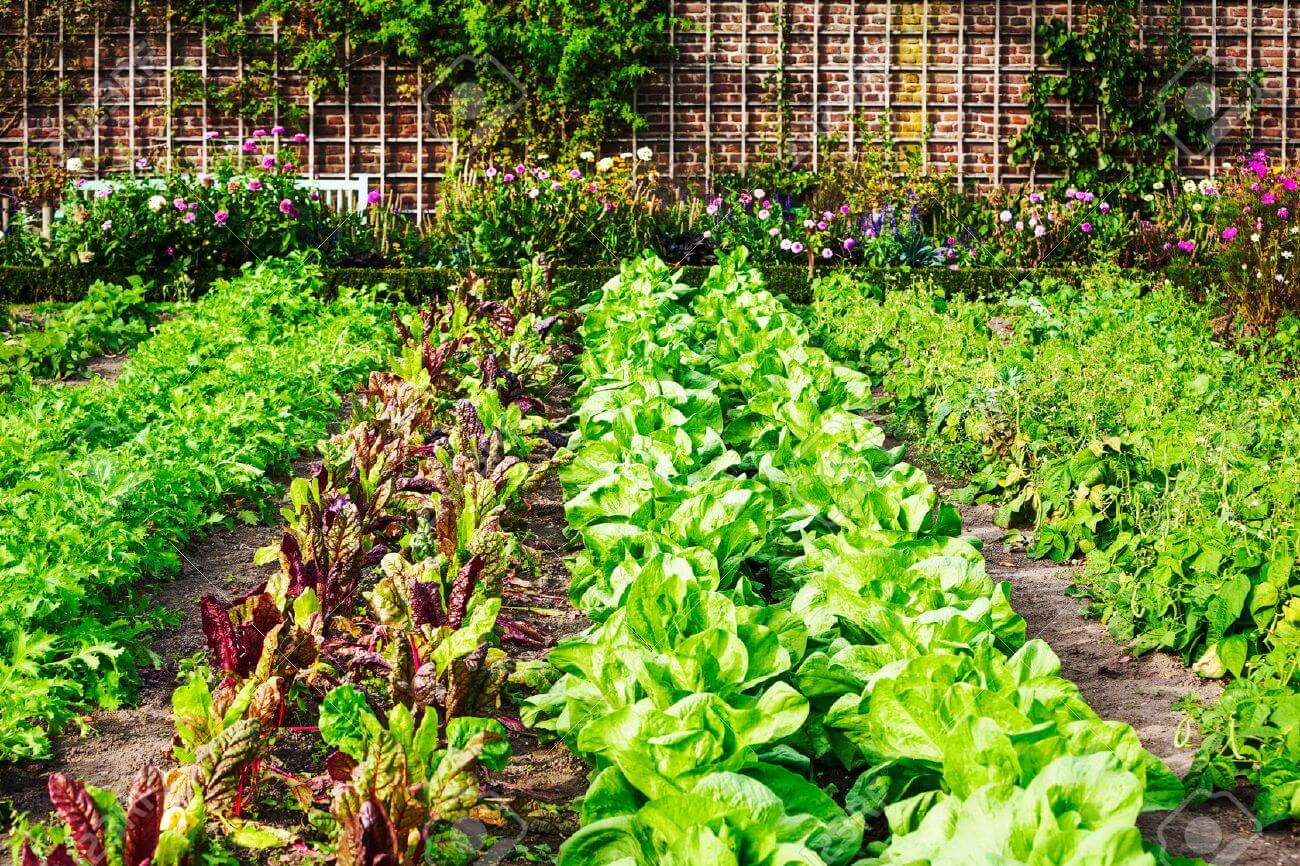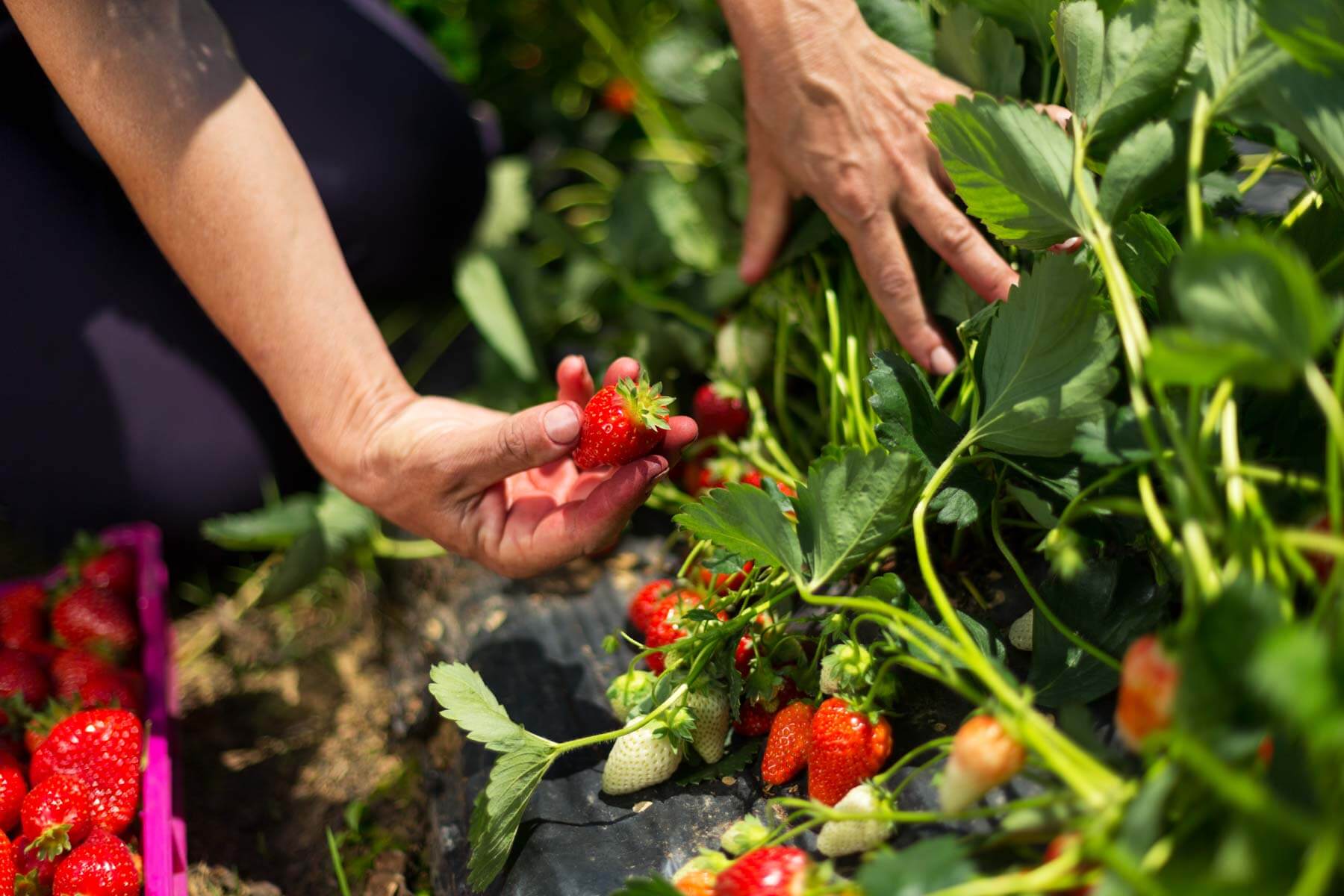Home>Gardening Techniques>Seasonal Gardening>What Perennials Can I Plant In The Fall


Seasonal Gardening
What Perennials Can I Plant In The Fall
Modified: January 22, 2024
Discover the best perennials for fall planting in this guide to seasonal gardening. Create a beautiful autumn garden with these recommended plants.
(Many of the links in this article redirect to a specific reviewed product. Your purchase of these products through affiliate links helps to generate commission for Chicagolandgardening.com, at no extra cost. Learn more)
Table of Contents
Introduction
Welcome to the world of seasonal gardening! If you’re a passionate gardener, you know that each season brings its own unique beauty and challenges. Fall, in particular, is a magical time for gardening enthusiasts as it presents a wonderful opportunity to plant perennials.
Perennials are plants that live for more than two years, returning year after year with a stunning display of colors and blooms. While spring is often associated with planting flowers and vegetables, fall is equally suitable for planting perennials. This often overlooked season offers several benefits that can help your garden thrive and flourish.
In this article, we will explore the benefits of planting perennials in the fall, discuss factors to consider when choosing fall perennials, recommend some popular plants for your fall garden, and provide tips on planting and caring for your plants. So, grab your gardening gloves and let’s get started on this exciting fall gardening journey!
Benefits of Planting Perennials in the Fall
Planting perennials in the fall has numerous advantages that can significantly benefit your garden. Let’s explore some of the key benefits below:
- Establishment before winter: Fall planting allows perennials to establish their root systems before the harsh winter weather sets in. The cooler temperatures and ample moisture create optimal conditions for root development. This helps the plants become better established and increases their chances of survival.
- Less watering: Fall typically brings more rainfall, reducing the need for frequent watering. This means less work for you and, at the same time, ensures that your newly planted perennials receive the moisture they need to thrive.
- Reduced stress on plants: When planted in the fall, perennials experience less stress compared to those planted in the spring or summer. The cooler temperatures and shorter daylight hours help minimize moisture loss through evaporation and reduce the risk of heat stress, giving the plants a better chance to establish themselves.
- Early spring growth: By planting perennials in the fall, you give them a head start for the following spring. The plants have already established a strong root system and can focus their energy on producing new foliage and flowers when the warmer temperatures return, giving you a vibrant and flourishing garden early in the season.
- Opportunity for clearance sales: Many nurseries and garden centers offer clearance sales on perennials towards the end of the growing season. By taking advantage of these sales and planting in the fall, you can save money and add a variety of beautiful plants to your garden.
These benefits make fall an ideal time to plant perennials. Not only will you save time and effort in watering and caring for your plants, but you will also ensure they have a strong start and a beautiful display in the following spring. So, let’s explore some factors to consider when choosing the right perennials for your fall garden.
Factors to Consider when Choosing Fall Perennials
When selecting perennials for your fall garden, there are several important factors to consider. By understanding these factors, you can make informed choices and create a stunning and successful autumn landscape. Here are some key considerations:
- Hardiness Zone: It is crucial to choose perennials that are suitable for your specific hardiness zone. Each plant has specific temperature and climate requirements, and selecting plants that are adapted to your zone will ensure their survival through winter and optimal growth in the following seasons. Check the hardiness zone map for your region and select perennials that are hardy in your zone.
- Soil Conditions: Different perennials thrive in different soil conditions. Evaluate the quality and composition of your soil, including its pH level, drainage, and fertility. Some perennials prefer well-draining soil, while others prefer moist or even boggy conditions. Understanding your soil’s characteristics will help you select plants that will flourish in your garden.
- Sun Exposure: Assess the amount of sunlight your garden receives throughout the day. Some perennials thrive in full sun, while others prefer partial or shade. Consider the sun exposure of your garden beds and choose plants that are suited to those conditions to ensure optimal growth and blooming.
- Blooming Season: Pay attention to the blooming season of different perennials. Some plants bloom in the spring, while others flourish in the summer or fall. By selecting a variety of perennials with different blooming times, you can create a dynamic and visually appealing garden that offers continuous color throughout the seasons.
- Plant Size: Consider the mature size of the perennials you choose. Ensure that they have enough space to grow and won’t overcrowd other plants. You don’t want your garden to look cluttered or have plants competing for resources. Take note of the height and spread information provided for each plant and plan your garden accordingly.
By taking these factors into account, you can select perennials that are well-suited to your garden’s conditions and create a harmonious and thriving fall landscape. In the next section, we will recommend some popular fall perennial plants that will add beauty and charm to your autumn garden.
Recommended Fall Perennial Plants
When choosing perennials for your fall garden, there is a wide range of beautiful options to consider. These plants not only add vibrant colors but also create a stunning display that can withstand the cool temperatures of autumn. Here are some recommended fall perennial plants:
- Chrysanthemums: Chrysanthemums, commonly known as mums, are a classic choice for fall gardens. They come in a variety of colors, including shades of yellow, orange, red, and purple. Mums are hardy and easy to care for, making them a popular choice for adding pops of vibrant color to borders, containers, or as focal points in the garden.
- Sedums: Sedums are low-maintenance perennials that are perfect for fall gardens. Their star-shaped flowers bloom in shades of pink, red, and white, attracting bees and butterflies. These plants are drought-tolerant and thrive in sunny, well-draining areas. They also provide beautiful texture and interest with their succulent leaves.
- Helenium: Helenium, also known as sneezeweed, is a stunning perennial that blooms in late summer to fall. The flowers resemble daisies and come in shades of yellow, orange, and red. Helenium thrives in full sun and adds a burst of warm colors to your garden, attracting butterflies and other pollinators.
- Japanese Anemone: Japanese Anemone is a graceful perennial that blooms in late summer and extends into fall. It features delicate white, pink, or lavender flowers with contrasting yellow centers. Japanese Anemone prefers partial shade and well-draining soil, making it a great option for woodland gardens or shady areas.
- Asters: Asters are classic fall-blooming perennials that come in a range of colors, including purple, blue, pink, and white. These daisy-like flowers attract butterflies and add a touch of elegance to autumn gardens. Asters thrive in full sun and well-draining soil, making them a popular choice for borders, rock gardens, or as cut flowers.
- Rudbeckia: Rudbeckia, commonly known as black-eyed Susan, is a cheerful perennial with bright yellow or orange flowers and a dark center. It blooms from late summer to fall and attracts butterflies and bees. Rudbeckia prefers full sun and is drought-tolerant, making it a perfect addition to sunny borders or wildflower gardens.
These are just a few examples of the many stunning perennials that can enhance your fall garden. Remember to consider your hardiness zone, soil conditions, and sun exposure when selecting plants to ensure optimal growth and flowering. In the next section, we will provide tips on planting and caring for your fall perennials.
Planting and Caring for Fall Perennials
Planting and caring for fall perennials properly will ensure their successful establishment and long-term growth. Follow these tips to create a thriving autumn garden:
- Choose healthy plants: When purchasing fall perennials, select plants with healthy foliage and strong root systems. Avoid plants with wilting leaves or signs of disease. Healthy plants have a higher chance of thriving in your garden.
- Prepare the soil: Before planting, prepare the soil by removing weeds, loosening the soil, and incorporating organic matter like compost or well-rotted manure. This will enhance drainage and provide nutrients for your plants.
- Plant at the right depth: Dig a hole slightly wider and deeper than the plant’s root ball. Place the plant in the hole, ensuring that the crown is level with or slightly above the soil surface. Backfill the hole with soil, firming it gently around the roots.
- Water thoroughly: After planting, water the perennials thoroughly to settle the soil and ensure good root-to-soil contact. Keep the soil moist, but not waterlogged, in the first few weeks to promote root establishment.
- Apply mulch: Mulching around your fall perennials helps to conserve moisture, suppress weeds, and regulate soil temperature. Apply a layer of organic mulch, such as bark chips or straw, around the base of the plants, being careful not to mound it against the stems.
- Monitor watering: While fall brings more rainfall, it’s important to monitor the moisture levels in your garden. Water your perennials during dry periods, especially in the first year of growth. Check the soil regularly and water deeply when needed.
- Deadhead and prune: Remove faded flowers and trim back any damaged or diseased foliage. Deadheading promotes new blooms, and pruning helps maintain the plant’s shape and vigor.
- Fertilize wisely: Avoid applying excessive fertilizer in the fall, as it can encourage new growth that may be vulnerable to winter damage. If necessary, apply a balanced, slow-release fertilizer in early spring to support healthy growth.
- Protect from frost: Monitor the weather and provide protection for your fall perennials during frost or freeze events. Cover the plants with frost blankets or bring potted plants indoors temporarily to prevent damage.
- Keep an eye out for pests and diseases: Routinely check your plants for signs of pests or diseases, such as aphids or powdery mildew. Early detection and appropriate treatment can prevent the spread of infestations and ensure the health of your perennials.
By following these guidelines, you can create a strong foundation for your fall perennials and enjoy their beauty for years to come. In the next section, we will discuss some common mistakes to avoid when planting fall perennials.
Common Mistakes to Avoid when Planting Fall Perennials
While planting fall perennials can be an exciting endeavor, it’s important to be aware of common mistakes that can hinder the success of your garden. Avoiding these pitfalls will ensure that your plants thrive and provide a beautiful display throughout the fall season and beyond. Here are some mistakes to watch out for:
- Planting too late: Many gardeners wait until the last minute to plant fall perennials, only to find that the ground has become too cold or frozen. It’s important to plant early enough in the season to allow the roots to establish before winter sets in, usually 6-8 weeks before the first hard frost date.
- Overwatering: While it’s important to keep the soil moist, overwatering can lead to root rot and other problems. Avoid excessive watering, especially during rainy periods. Monitor the moisture levels in the soil and adjust watering accordingly.
- Skipping soil preparation: Neglecting to prepare the soil before planting can impact the growth and health of your fall perennials. Take the time to remove weeds, loosen the soil, and incorporate organic matter to improve drainage and nutrient availability.
- Choosing incompatible plants: It’s essential to select fall perennials that are compatible with your hardiness zone, soil conditions, and sun exposure. Planting species that are not suited to your garden’s environment may result in poor growth, disease susceptibility, or even plant death.
- Neglecting winter protection: While fall perennials are typically hardy, providing adequate winter protection is crucial. Mulching, covering plants during frost events, and being mindful of extreme temperature fluctuations will help safeguard your perennials and ensure their survival.
- Failing to plan for bloom succession: To create a continuous display of color, it’s important to choose perennials with varying bloom times. Planting only fall-blooming perennials may result in a lack of visual interest earlier in the season. Incorporate spring and summer-blooming perennials as well to ensure year-round beauty.
- Ignoring plant spacing: It can be tempting to overcrowd your garden with too many perennials, but this can lead to competition for resources and limited growth. Be sure to follow the recommended spacing guidelines for each plant to allow for proper airflow and room for expansion.
- Forgetting about ongoing care: Fall perennials still require regular care even after planting. Ongoing tasks such as deadheading, pruning, monitoring for pests and diseases, and adjusting watering as needed are crucial to maintain the health and vitality of your plants.
Avoiding these common mistakes will set you on the path to a successful fall garden filled with thriving perennials. With proper planning, care, and attention, you can enjoy the beauty and resilience of your fall perennials year after year. In the next section, we will discuss the importance of overwintering your fall perennials.
Overwintering Your Fall Perennials
Overwintering your fall perennials is an important step to ensure their survival and healthy regrowth in the following spring. While many perennials are hardy and can withstand cold temperatures, providing some extra care and protection will greatly increase their chances of thriving. Here are some tips for overwintering your fall perennials:
- Leave foliage intact: It may be tempting to cut back the foliage of your perennials in the fall, but it’s best to leave it intact. The dead foliage acts as a protective layer, insulating the plant’s crown and roots from winter temperatures.
- Apply a layer of mulch: Before the first frost, apply a layer of insulating mulch around your perennials. Use organic materials such as straw, dried leaves, or bark chips to help regulate soil temperature and protect the roots from freezing and thawing cycles.
- Protect from extreme temperature fluctuations: Fluctuating temperatures can be damaging to plants. Use frost blankets or row covers to shield your perennials during particularly cold or windy periods. This will provide an extra layer of protection against freezing temperatures.
- Water sparingly: During the winter months, water your perennials sparingly. Too much water can lead to root rot, especially when the soil is cold and saturated. Monitor the moisture levels and only provide water if the soil is dry and temperatures allow for absorption.
- Divide and transplant in early spring: Early spring is an ideal time to divide and transplant fall perennials that have become overcrowded. Dividing the plants not only helps manage their growth but also promotes new growth and vitality. Be mindful of the appropriate timing for each specific plant.
- Monitor for pests and diseases: While many pests and diseases are less active during the winter, it’s still important to keep an eye out for any signs of trouble. Inspect your perennials regularly and take appropriate action if you notice any issues, such as pest infestations or fungal diseases.
- Remove winter protection gradually: As the weather begins to warm up in spring, gradually remove any winter protection you have provided. Start by uncovering the plants during the day and putting the cover back in place at night. This gradual process will allow your perennials to acclimate to the changing conditions without sudden temperature shocks.
- Resume regular care: Once the threat of frost has passed, resume your regular care routine for your fall perennials. This includes watering as needed, fertilizing if necessary, and performing any necessary pruning or deadheading to encourage healthy growth and blooming.
By following these overwintering tips, you can ensure the survival and thriving of your fall perennials. Remember that each plant may have specific requirements, so it’s essential to research the needs of each species in your garden. With proper care and attention, you will be rewarded with a garden full of vibrant, resilient perennials year after year.
Conclusion
Fall is an incredible season for gardening, and planting perennials can add a burst of color and life to your autumn landscape. By taking advantage of the benefits of fall planting, considering important factors when choosing perennials, and following proper care and overwintering practices, you can create a thriving and visually appealing garden that will bring joy year after year.
With the establishment of roots before winter, perennials planted in the fall have a head start for the following spring. The cooler temperatures and increased moisture provide ideal conditions for root development and reduce stress on the plants. Additionally, the availability of clearance sales can save you money while adding a variety of plants to your garden.
When selecting fall perennials, consider your hardiness zone, soil conditions, sun exposure, and desired blooming season. By choosing species that are well-suited to your garden’s environment and creating a succession of blooms, you can maintain a visually stunning garden throughout the seasons.
Proper planting and care, such as preparing the soil, watering appropriately, and providing mulch and winter protection, will contribute to the success and longevity of your fall perennials. Avoid common mistakes like planting too late, overwatering, neglecting soil preparation, or failing to provide adequate winter protection.
Remember to monitor your perennials for pests and diseases, and take action if necessary. By following these guidelines, you can enjoy a beautiful, flourishing fall garden and continue to experience the rewards of your efforts year after year.
So, grab your gardening tools and get ready to embark on an exciting journey in seasonal gardening. With the right knowledge and attention, your fall perennials will transform your garden into a vibrant and stunning display of nature’s beauty.
